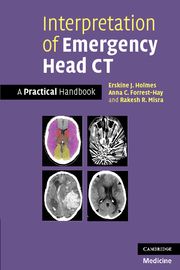Introduction
Published online by Cambridge University Press: 05 November 2009
Summary
Computer tomography (CT) is now widely available and is being used more and more, unlike magnetic resonance imaging, 24 hours a day, 7 days a week. CT is often the initial imaging modality of choice; not only for diagnosis but also to guide treatment.
The most common request for CT out of hours is brain imaging. CT is a vital tool in the assessment of patients with serious head injury. It remains the investigation of choice for the assessment of acute haemorrhage and bony injury. Consequently, patient management has been transformed since its inception, as rapid imaging and diagnosis of intracranial pathology can facilitate emergency intervention. Equally, a delay in diagnosis, and treatment, may adversely affect outcome and prognosis.
Patient's expectations of modern medical technology are high. There are ever-increasing time pressures to form rapid diagnoses, and improve efficiency, in the face of a more litigious society. The European Working Time Directive is likely to make doctors feel more vulnerable, with shift patterns reducing personal experience and training opportunities. Furthermore, the multidisciplinary team on duty in the Hospital at Night Scheme may not possess the appropriate expertise between them to interpret emergency imaging. Yet, the NICE guidelines are in place to further increase the number of CT scans performed out of hours. To add to this, the nationwide shortage of radiologists results in a limited CT service available out of hours.
- Type
- Chapter
- Information
- Interpretation of Emergency Head CTA Practical Handbook, pp. xiii - xivPublisher: Cambridge University PressPrint publication year: 2008
- 1
- Cited by



